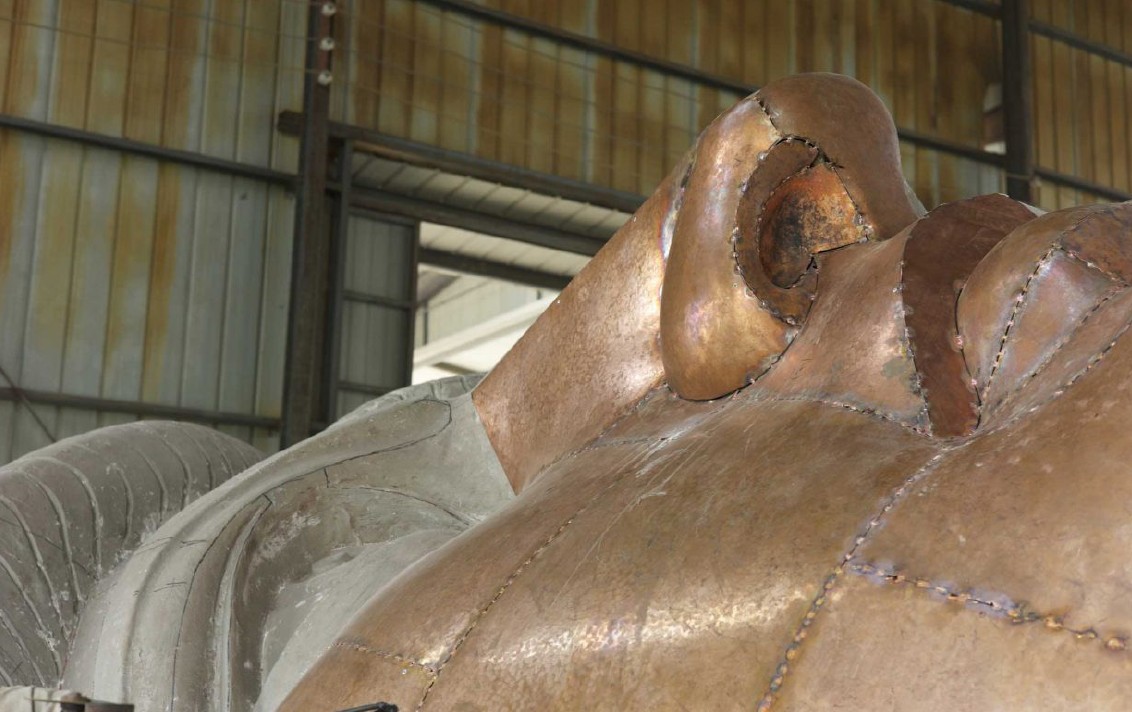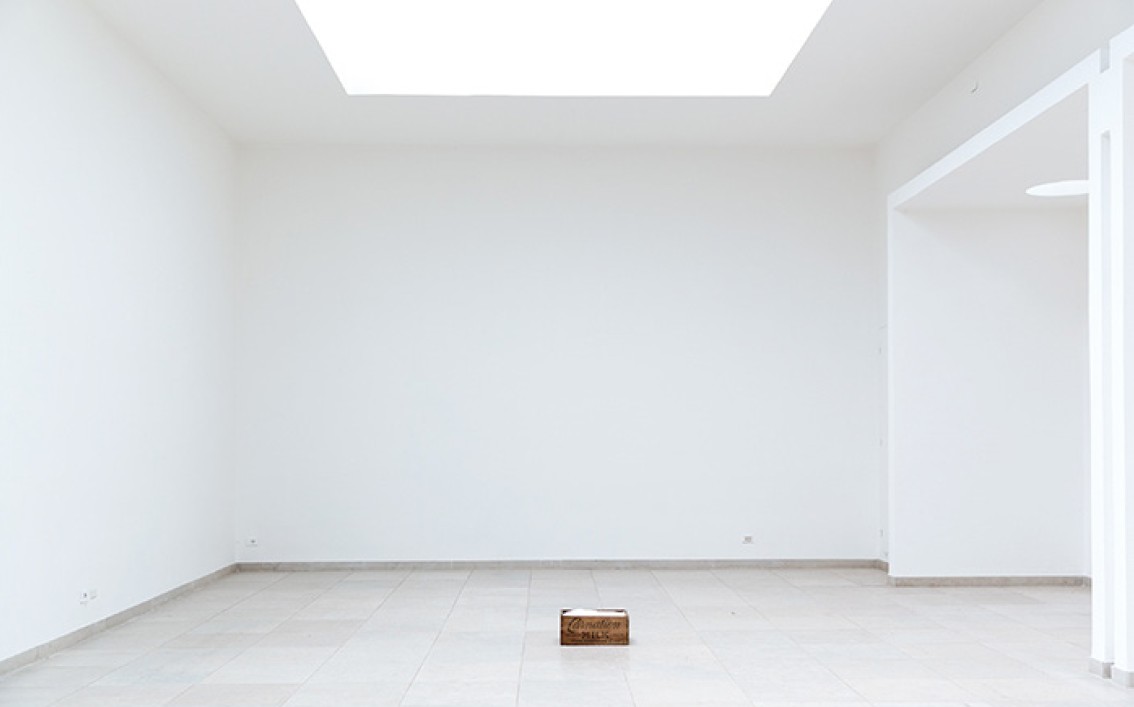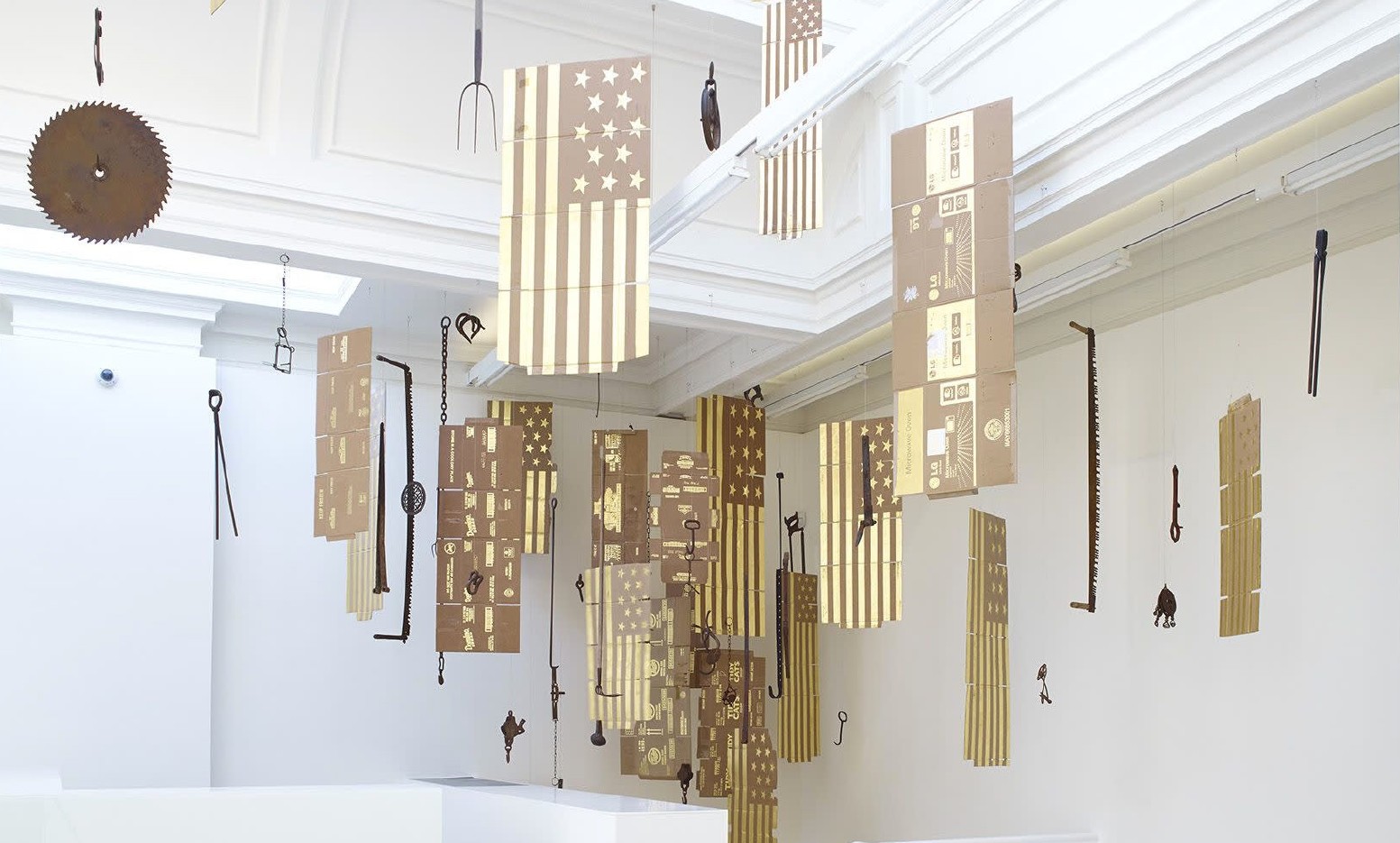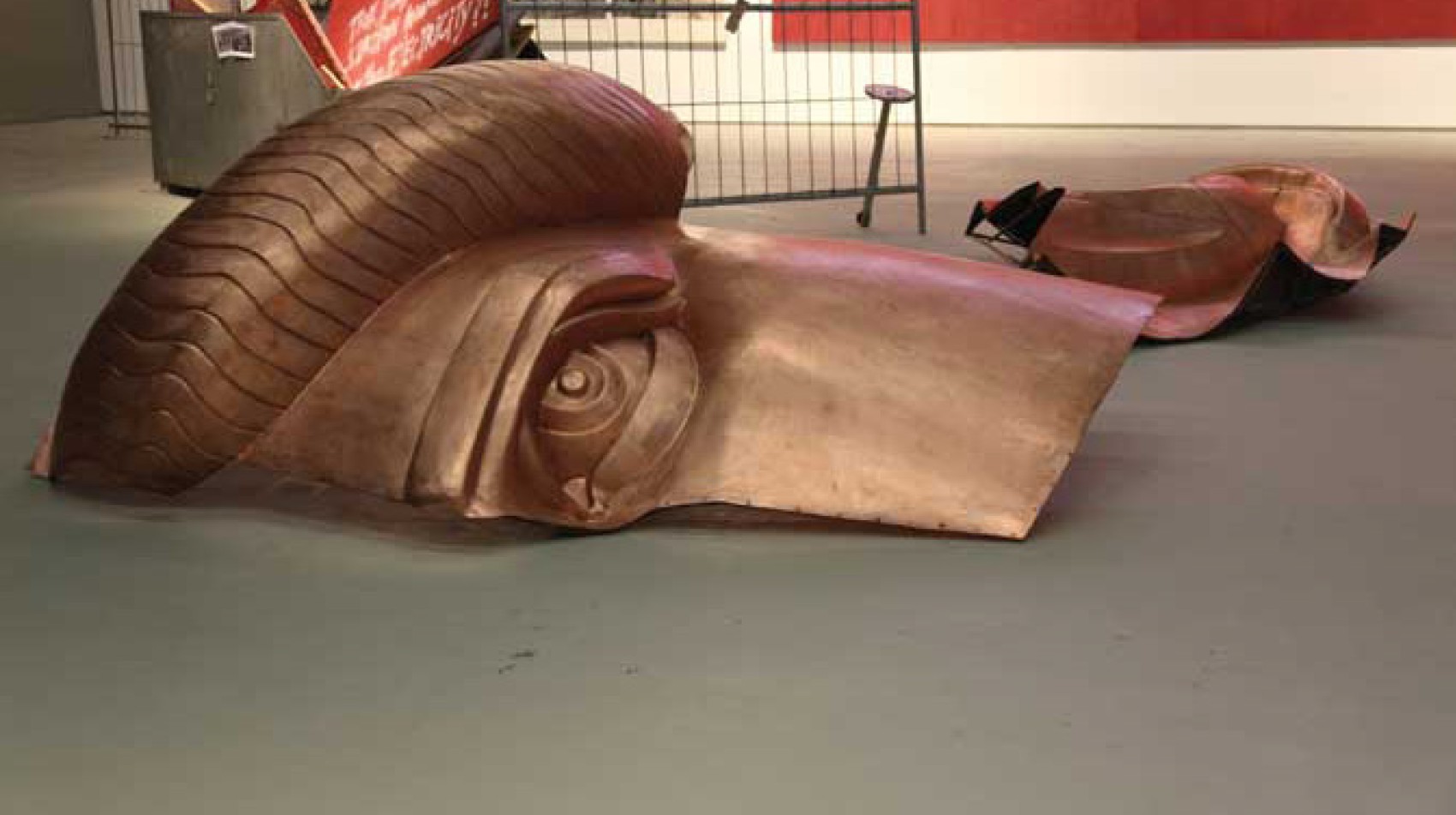Reflections on the artistic practice of Fiza Khatri
An email exchange between curator Aziz Sohail and artist Fiza Khatri in which they explore how modes of making, thinking and being amalgamate in her practice
In dialogue with the exibition On Earth We’re Briefly Gorgeous, Jhaveri Contemporary presents Fiza Khatri, Sailoon and other Stories. Working in oil, Khatri tenderly and frankly documents her day-to-day encounters and the parameters of queer acceptance and performance. Her painterly vignettes are a generous invitation into the close-quarters of her world.
On 27 May 2021, in relationship with the exhibition Sailoon and Other Stories (on view through July 31) curator Aziz Sohail began an email exchange with Fiza Khatri. Both are from the city of Karachi and have known each other as friends, colleagues and a part of a shared community over the last five years.
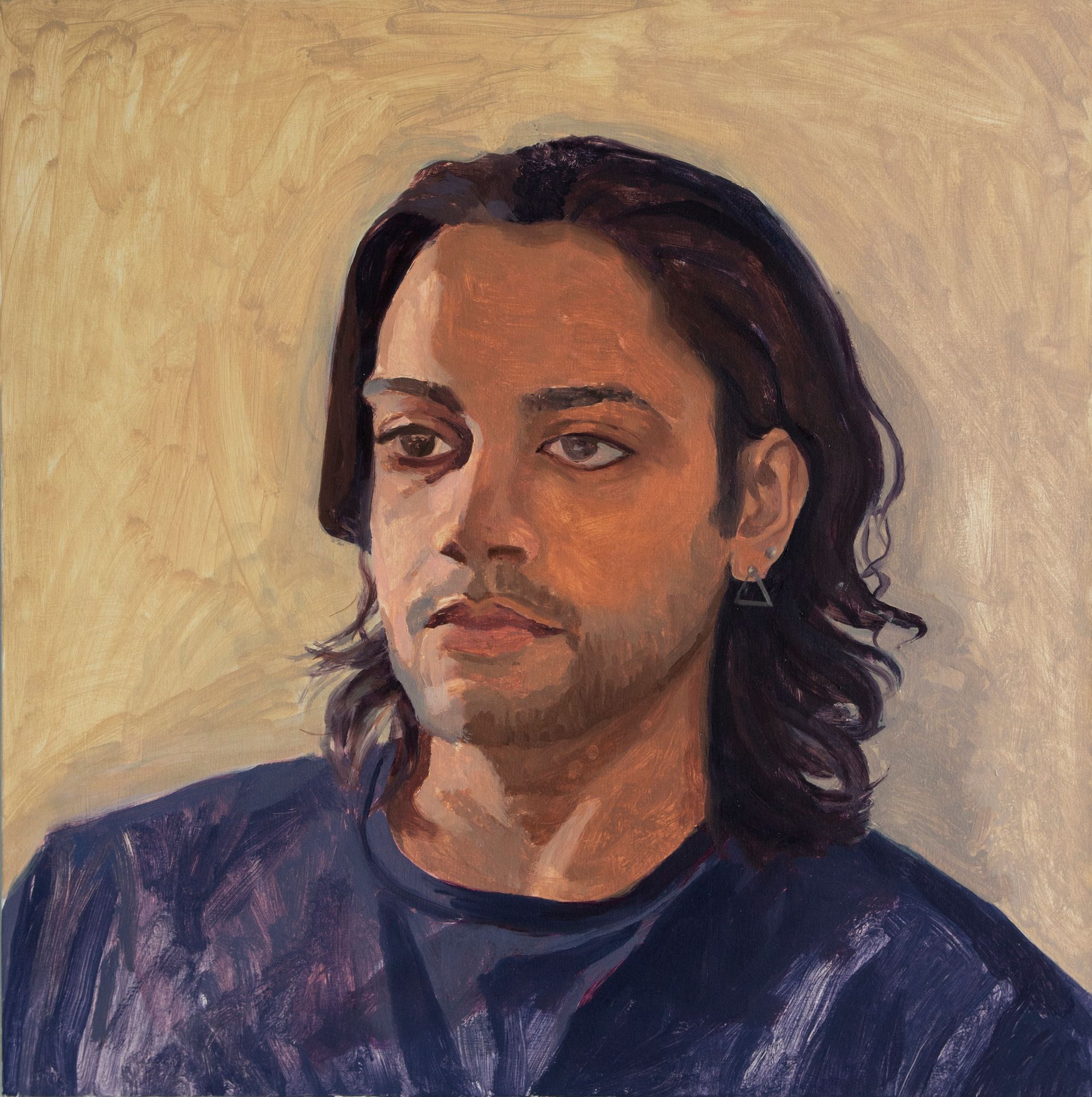
Umair, 2021
Oil on canvas
45.7 x 45.7 cm
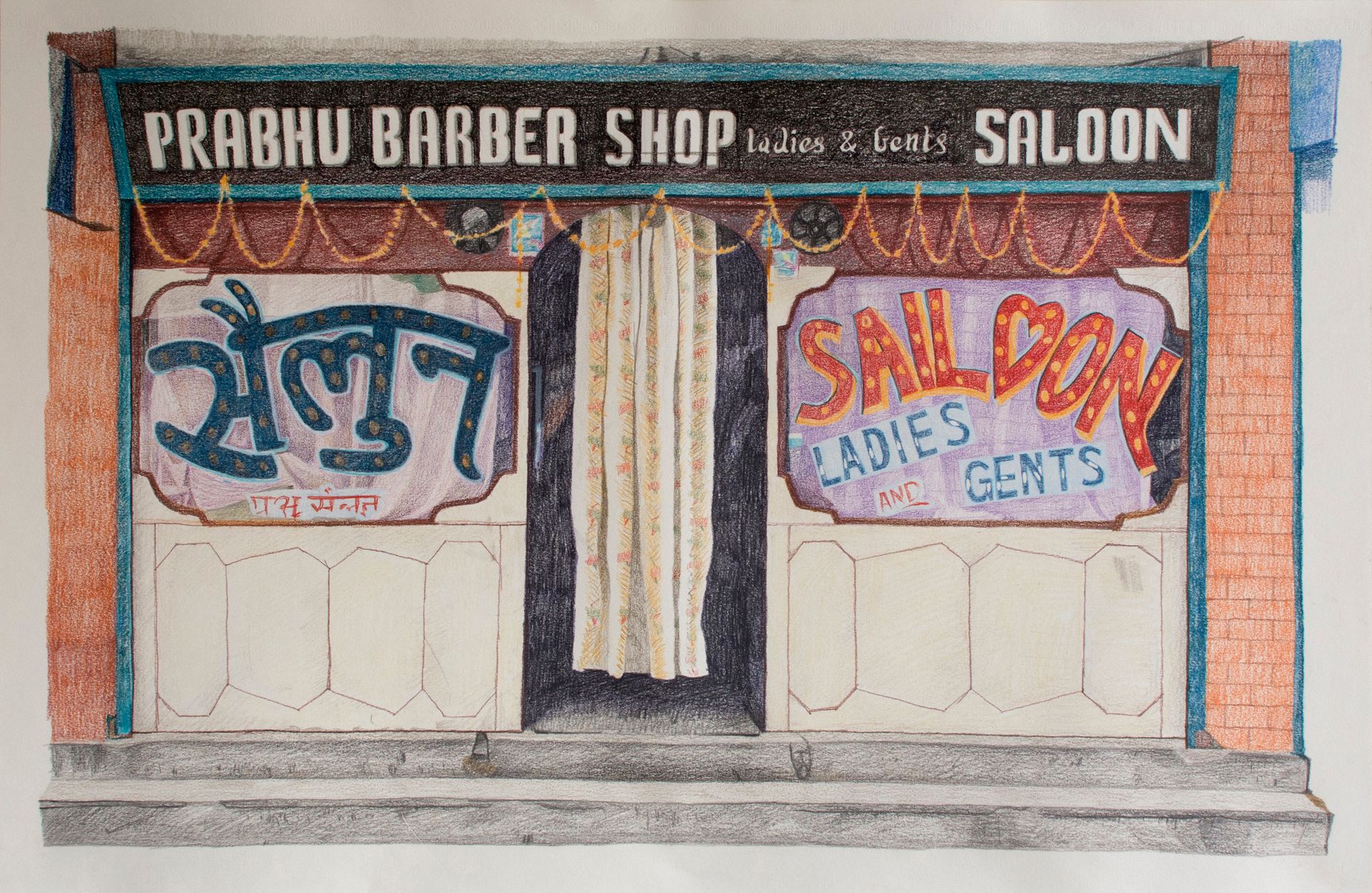
Sailoon, 2019
Colour pencil on paper
42 x 63.5 cm
On Fri, May 28, 2021 at 10:13 AM Aziz Sohail wrote:
dearest – thanks for sending this. sending you the first two questions –
1) how do you think of painting as a space where you create spaces of welcome, of belonging – as a response and alongside the world around you?
2) I am interested in the figure of the animal – the stray dogs, the cats, which have a very specific relationship of tension, co-existence, care and mortality with the urban and the public in Pakistan, specifically the city of Karachi. How does the trope and the metaphor of the animal and the non-human and your relationship to it personally as well inform your painting and your practice?
(btw, have been reading this text and was thinking about your work in relation: https://www.dukeupress.edu/animacies)
hugs,
Aziz
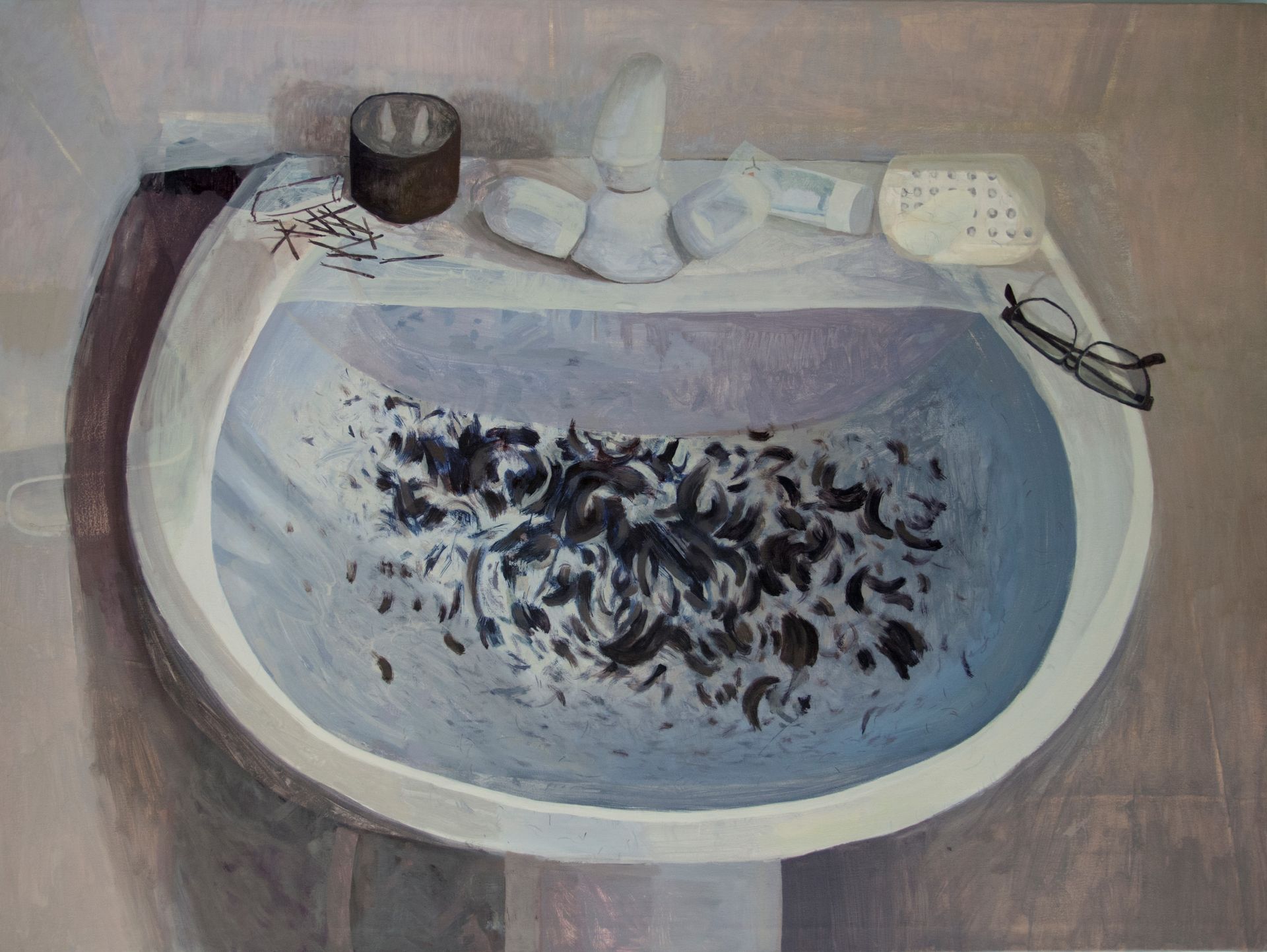
Big Sink, 2021
Oil on canvas
91.5 x 122 cm
On Mon, Jun 7, 2021 at 12:45 AM Fiza Khatri wrote:
Hi love, thank you for your questions! Sorry it took me a while to get to them. Last week was a lot of wrapping up of work in various places.
To address your first question – that’s interesting! I am mostly quite aware of painting as a solitary practice, which happens in the studio usually in isolation. I see it as a time when I can pull away into myself and process the world slowly and selfishly. Unless of course I’m painting someone from life, in which case I am aware of opening up that space and inviting another person into it. Their presence and needs become a part of the painting process. I am aware of how they’re feeling, and I try to make the process as comfortable as can be for them.
But I also wonder if you mean that question in a different sense – in the sense of the painting as an object/image creating a sense of welcome or belonging in the world? I know I’ve certainly had experiences of looking at a painting and feeling undeniably held and affirmed by a quality of touch, a specific colour, or a form. This is certainly not a
conscious goal while I’m making the work, though I am aware of the imagery I am representing and its various associations. Since they are drawn directly from my lived experience they are also rooted in a certain place and time and culture.
Regarding non-human animals, there is so much to think about! On the one hand there is a pervasive sharing of cute animal memes which are basically a relational tool of our time, a complete mode of communication in themselves. Recently there has also been an upsurge of articles on how millennials are more interested in adopting pets than having babies (weird comparison but ok); essentially that our generation chooses to see our furry companions as complete living beings rather than objects of ownership, noting their agency and their needs as distinct from our own and as worthy of equal consideration to our own. To me it reflects a larger desire to turn away from capitalist/extractive relationships with our environments and co-habitants towards realising greater interdependence. I’m interested in painting portraits of animals for this reason as well, I see them similarly to portraits of my other friends.
There’s definitely more to think through but for now I’ll send these across! Hope you had
a good birthday.
Love,
Fiza
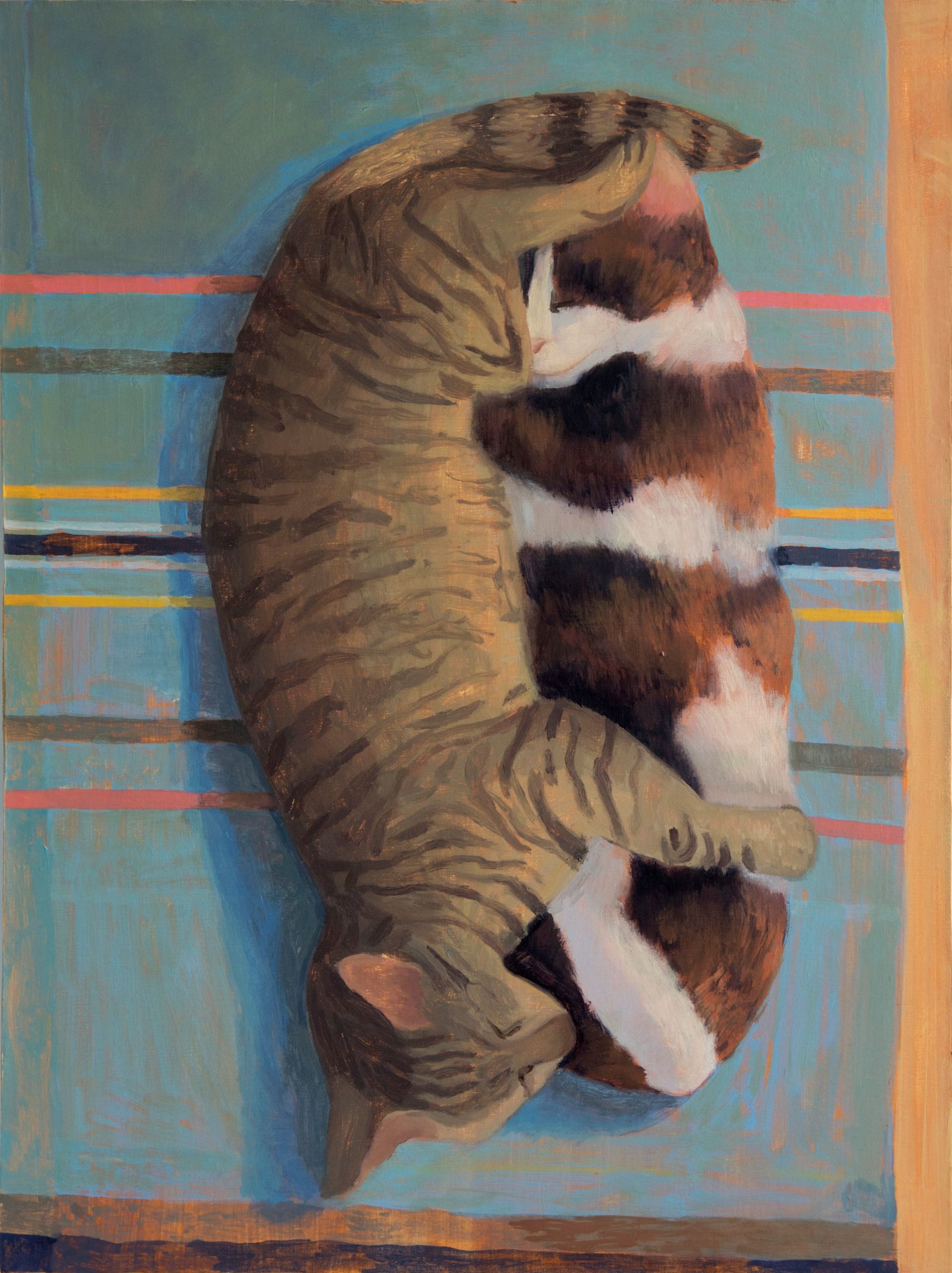
Spark and Bite, 2021
Oil on canvas
61 x 45.7 cm
On Wed, Jun 16, 2021 at 1:07 AM Aziz Sohail wrote:
Hi love,
Sorry for my late response. Time is so warped in this transition of school/real life.
I like that you talk about painting as a private, intimate practice in your studio and I wonder if you can think more about that. What moments of respite and space it may give you in Karachi, especially so much of your source material is coming from? Karachi is such an intense hectic city as we know, and you are involved in so much community making and building. How is painting both of this and not of this/these relationships?
I know that so many of your works are from lived experiences, but I also wonder if you think of the fact that you’re creating new worlds – that if painting and art making can do that – and if so how are you blurring these moments of the real and the speculative?
I also love that so many of your works focus on an image of the single figure and the intimacy generated through that focus – so many of them beings that you love – both human and non human. What may we achieve with the single vs the crowd?
look forward to hearing from you!
lots of love,
Aziz
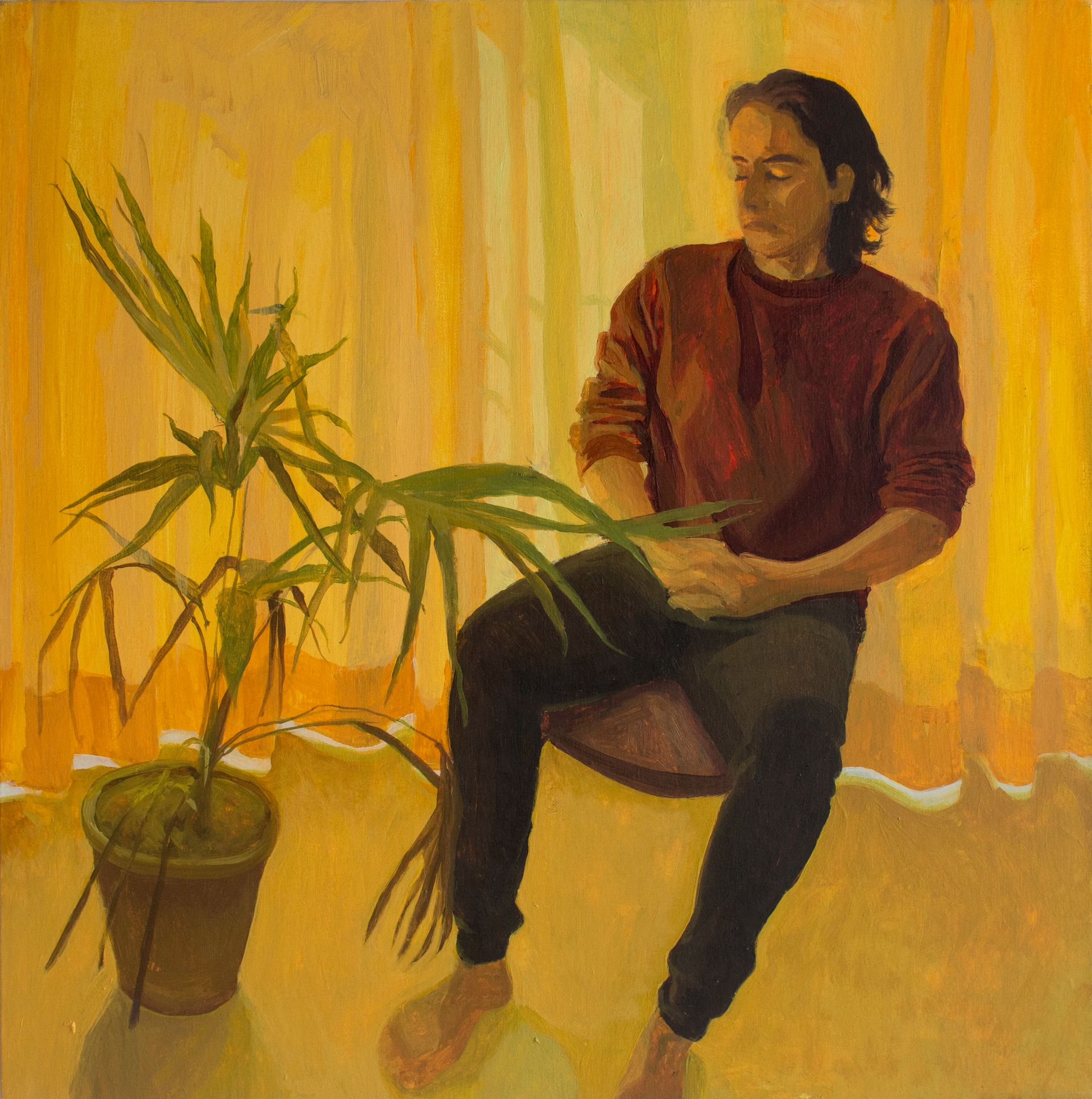
Umair and Plant, 2020
Oil on canvas
45.7 x 45.7 cm
On Tue, Jun 22, 2021 at 2:00 AM Fiza Khatri wrote:
Hi Aziz,
I feel quite strongly about keeping a studio space outside of the home – I think it’s essential for one’s independent thinking and making to have a space of one’s own, and also a privilege afforded by so few. We’ve spoken before about Virgina Woolf’s ‘Room of One’s Own’ which has stayed with me since I first read it several years ago. I see my studio as that room of my own in Karachi – where I am free to ruminate and explore without fear of consequence or surveillance. Especially for AFAB folks who are socialised from birth into giving up space and diminishing their needs, it can be transformative to insist upon a space which exists with the primary purpose of nurturing them. That is definitely my studio for me.
At the same time it can also be dangerous to consider the studio as entirely unaffected by the outside world. All of who I am outside of the studio is still present with me inside it. I really like the way John Berger puts it in a correspondence with the late British painter Leon Kossoff – he calls the studio a stomach; a place of digestion. That
resonates with me, especially since so much of my painting is about the people, animals, and places I am in community with in my daily life. In the process of painting I am most often celebrating them.
I’m not sure if I relate to speculation directly in my practice (I would have to think about it more). I feel closest to Autofiction and am most compelled by the kind of world building which happens directly in conversation with lived experience. I’m interested in playing with context by omitting or including pieces of information to see how that can change the read of a painting. I’m inclined to think of it as a subtle world-building, if at all – but I wonder if you see differently?
Re: single vs the crowd – That is a loaded question! I wonder if you can expand upon it a bit more? Especially since I hardly address crowds in a single painting. I suppose I could think about a collection of my paintings as forming a crowd or a community of sorts, where each singular portrait represents one member of that community. It may also just be a consequence of my own social preferences as someone who prefers intimate social settings, and also thinking about how to recreate that feeling of intimacy for a viewer. For instance in (Queen of) Ming Court, Iva’s Spread and Heartbreak Pakoras I ‘seat’ the viewer directly across a table from and in conversation with the depicted figure. I often think about how the viewer is framed in relation to the image.
Thanks for these thoughtful questions! Looking forward to your response.
Love,
Fiza
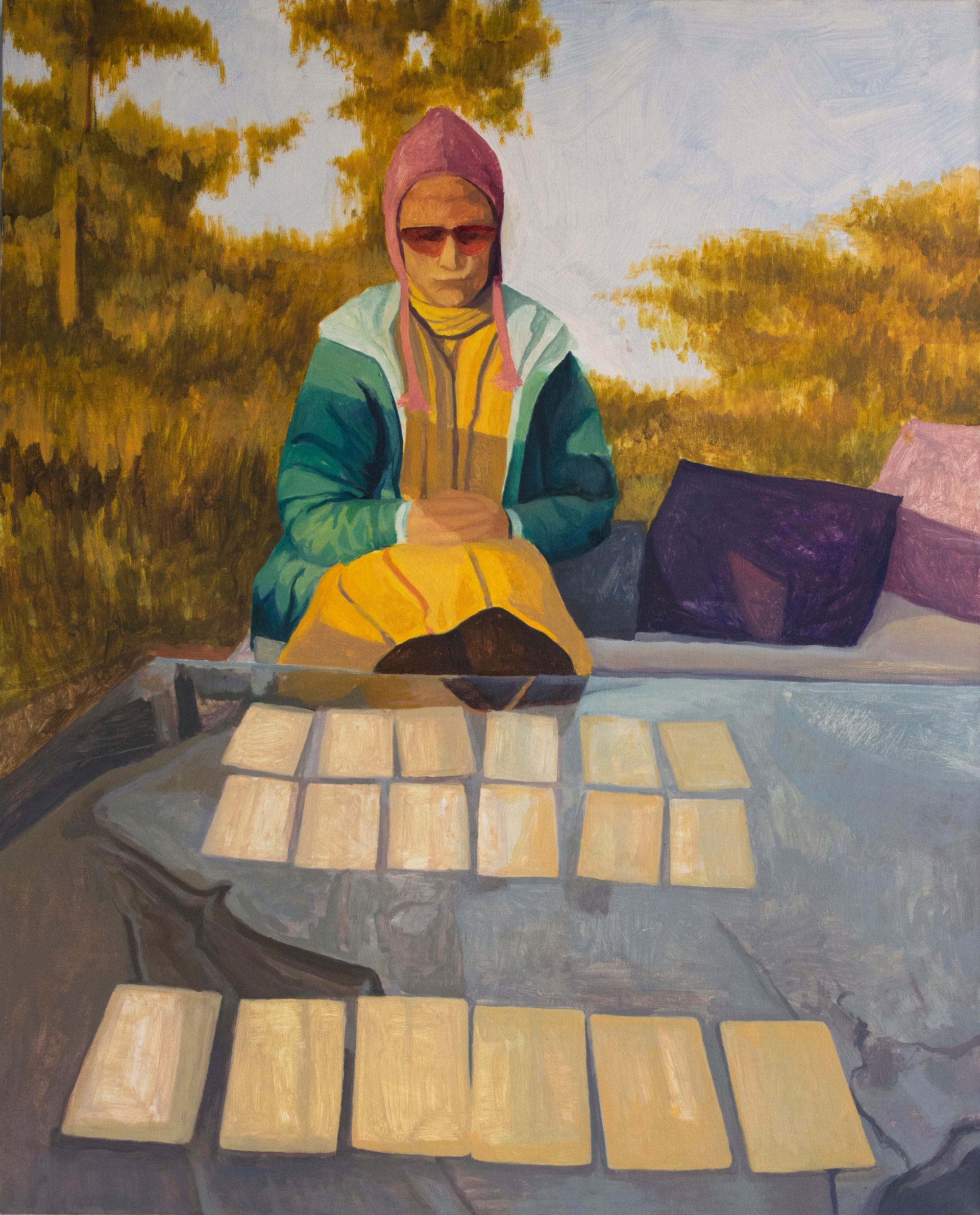
Iva’s Spread, 2020
Oil on canvas
76.2 x 61 cm
I feel quite strongly about keeping a studio
space outside of the home –
I think it’s essential for one’s independent thinking
and making to have a space of one’s own,
and also a privilege afforded by so few.
On Mon, Jul 5, 2021 at 3:32 AM Aziz Sohail wrote:
Dear Fiza,
Thanks for these amazing and generous responses. I love that you bring up Virginia Woolf and I know you have mentioned her text multiple times in the past. I also wonder if you think of your work, your studio, your painting in any of the traditions of writing or making by women from South Asia. I think of someone here like Ismat Chughtai potentially but I wonder if there are any other inspirations for you?
It is so important to clarify that a studio cannot be unaffected from the outside world. I love the Berger/Kossoff reference to the studio as a place of digestion and the reference and linkages to your work – which you also mention. I am also thinking here of cannibalism or the idea of anthropophagy and I wonder how we may think of your paintings as perhaps still sustaining care and love in a space and context that can seem so intensely consuming in an ever growing city.
Thinking also about Woolf, Berger and Chughtai, I also want to touch upon the use of the word Autofiction – you of course aren’t writing (although you also have that as an element within your overall practice!) but painting. What is painting doing that writing cannot?
I think it is significant that you mention the word surveillance given the times and contexts we live in where there is deep and intense policing by the state and public – and surveillance is multi-modal. Surveillance asks for us to reveal and be fully available. How do you think in your painting and your work, you are also creating spaces of opacity and of care for the community that comes through?
In terms of clarification for the final point, I guess I was reflecting on the fact that your paintings are indeed focusing on the individual rather than a collection of people. Here I am thinking of other painters such as Salman Toor, who depict individuals but also have many paintings of parties, gatherings, events, and moments of encounter. I think this is where my question was coming from. I also think it’s so interesting, of course, as you say, the depicted figure is seated across from you many of the times, and significantly you only really are depicted yourself in one painting – Shining – as a reflection from the mirror – and that significantly is a work in which there is a ‘crowd’ or at least a collection/gathering of men. What do we make of that work? It is one of my favourites – as you know 🙂
lots of love,
Aziz
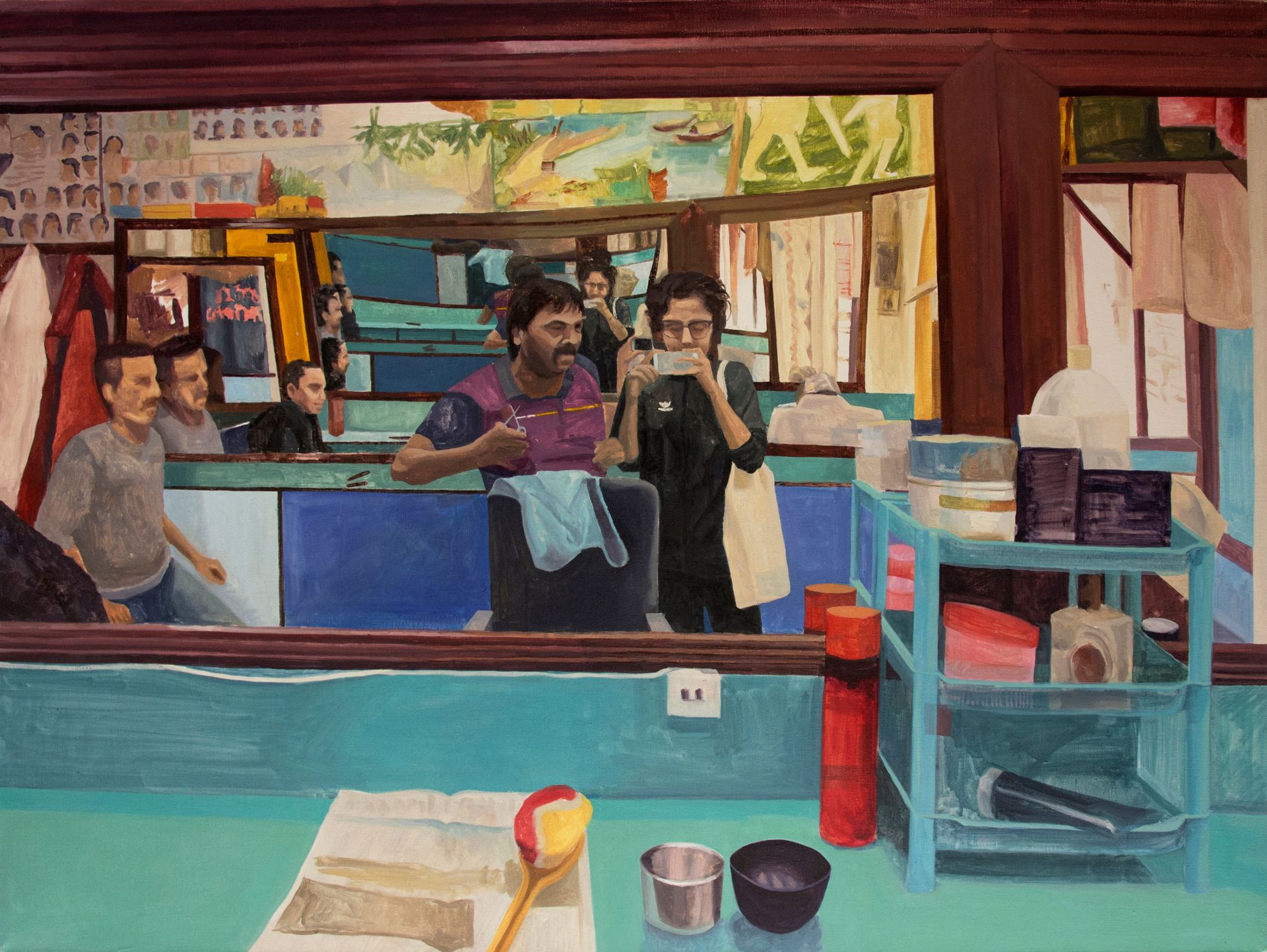
Shining, 2020
Oil on canvas
91.5 x 122 cm
On Fri, Jul 9, 2021 at 12:10 AM Fiza Khatri wrote:
Hi Aziz,
Yeah, I’ve been looking a lot at Amrita Sher-Gil‘s paintings recently. She was a force and her legacy in figurative painting is rich and complex. I also find some resonance with her training within a Western painting tradition and trying to contextualise that within South Asia, though in some ways she is still positioned as an outsider in relation to many of the spaces she depicts. Many of her paintings of femmes at leisure/lounging or participating in shared rituals of care have this sense – the gaze is removed and distant. Her self-portraits on the other hand are more intense and deliberate in their
encounter with the viewer.
I also am aware of this weight of having to justify lineage and tradition as a non-cis-man (especially while working as a figurative painter – because concerns of representation are so close at hand) and I wonder if that’s something she was also contending with while she was alive? She is obviously aware of the complexity of her influences/lineage in paintings such as Self-Portrait as a Tahitian. On some level I feel like she just really enjoyed painting the figure!
I’m not sure how I feel about anthropophagy in relation to my work but yes, I do think the primary relationships in my work are those of care and nurture.
Ah, there are so many ways we could approach this question! I always return to the materiality of paint when I think about the medium – the delivery of form from the maker to the receiver is different, the gestures/actions of the body utilised for each medium are different, the senses engaged are different – I suppose on a fundamental level, the translation process is so totally different. Painting is experienced first in the body, as sensory perception, and then translated into thought or verbal language as an option. Writing of course is verbal language to begin with. It can evoke feelings of sensory perception quite vividly, but it cannot escape thought. I suppose it registers differently in the body.
Opacity is quite important for me as a maker and as someone who moves through the world. I’m interested in the tensions it brings up, especially in relation to the politics of visibility which come up a lot in matters of representation for non-normative communities. In my paintings I think about it in relation to access and abstraction – how visual information is contextualised, and how the figure relates to the viewer. The painting Two Heads for instance addresses this directly, with both figures turned directly away from the viewer, refusing to be seen. I think the right to refuse is a vital part of anyone having agency in this world, and it is important to uphold it in all projects of representation.
That’s an interesting note about groups of figures in Shining! That’s definitely something I’ll have to sit with for longer. I am certainly not resistant to gatherings, I suppose it just hasn’t come up as a conscious concern at this point.
Hugs,
Fiza
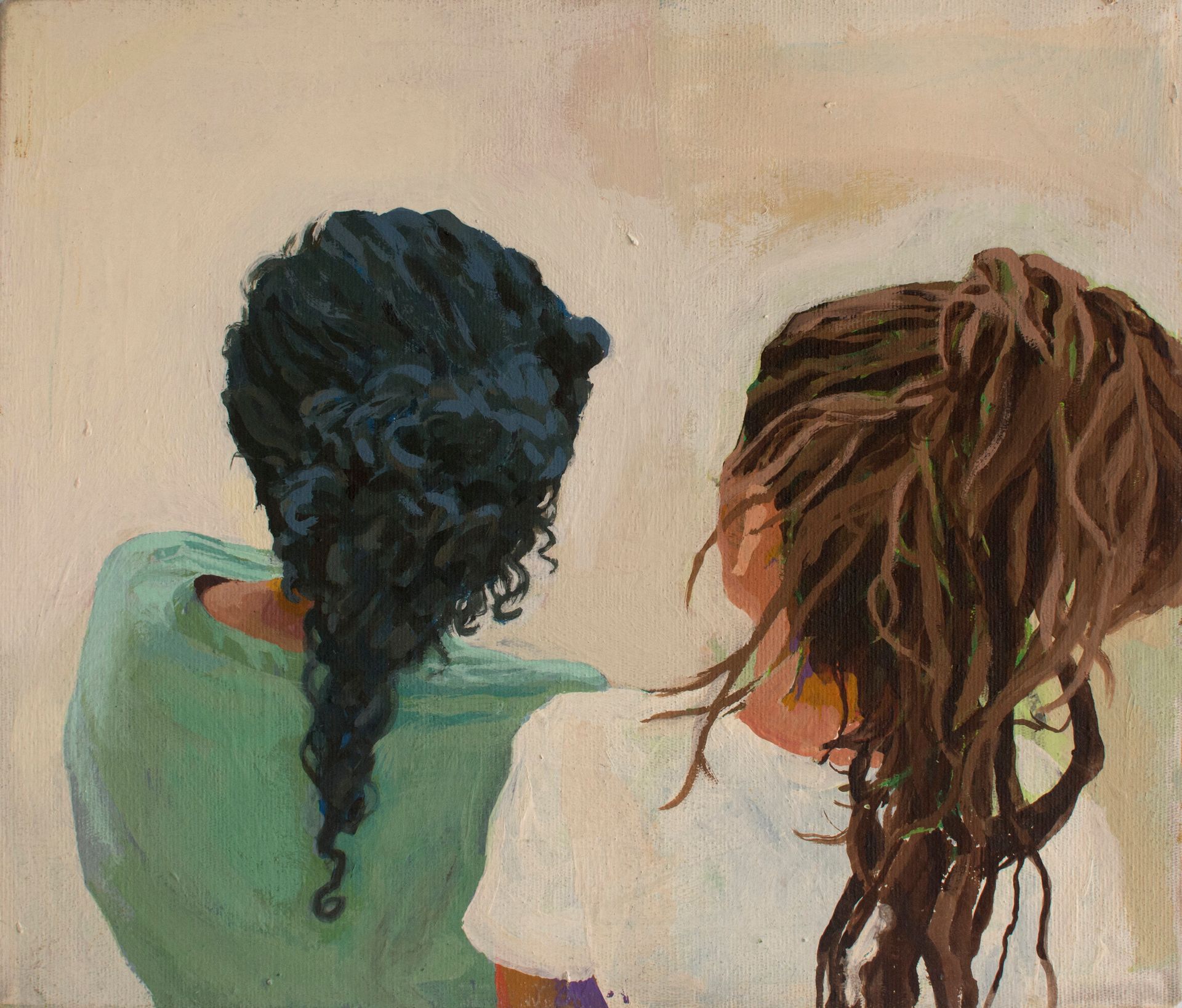
Two Heads, 2017
Emulsion and dye on canvas
25.5 x 30.5 cm
Opacity is quite important for me as a maker and as someone who moves through the world. I’m interested in the tensions it brings up, especially in relation to the politics of visibility which come up a lot in matters of representation for non-normative communities.
About Aziz Sohail
Aziz Sohail is an art curator, writer and researcher whose work is focused on building interdisciplinary connections and supporting new cultural and pedagogical infrastructures. Since 2020, with The Many Headed Hydra, he has been co-leading a language where yesterday are the same word. Kal, a trans*oceanic platform supporting practices enacting queer pasts/futures and decolonial ecologies. His current research is a meditation on the longue-duree intersections of sexuality and colonialism with migration, law and identity through the work of practitioners who navigate empire(s) and its afterlives.
Sohail has been part of residencies and workshops with The New Art Gallery Walsall, England (2015), Khoj, New Delhi (2018), the Nepal Picture Library (2019), and Maxim Gorki Theater, Germany (2019) and the ONE Archives, Los Angeles (2021). His current practice is being supported by a fellowship from the Asian Cultural Council (2019-2022). He has previously worked with organizations such as the British Council and the Lahore Biennale Foundation to build new cultural initiatives and spaces in Pakistan. As a South Asia Fellow at Cornell University in 2017, he began a long term project building an archive of cultural and visual production in Karachi from the 1990s through today which led to an exhibition-symposium co-organised with Bani Abidi at the Sharjah Art Foundation (2019).
About Fiza Khatri
Fiza Khatri (b.1992, Karachi. Lives and works in Karachi) paints and draws a catalogue of intimate moments from her immediate environment. Her tender, spirited brushwork courses with affection and pulls us through the spaces in which she operates. Pointing to the social constructions that shape her world, Khatri speaks to the complexities of articulating and, to an extent, performing queerness. Khatri is expected to receive her MFA from Yale School of Art in 2023, and was awarded her BA from Mount Holyoke College, Massachusetts in 2015.
Her work has been exhibited, most recently at IVS Gallery, Karachi (2019); The Research and Publication Center, Lahore (2019); Photo Kathmandu, Kathmandu (2018); Lahore Biennale Collateral, Lahore (2018); The New York Studio School, New York (2015); Fowler-Kellog Art Centre, Chautauqua (2014).
She has curated projects at VM Art Gallery, Karachi (2020); AAN Gandhara Art Space, Karachi (2018); FOMMA Trust, Karachi (2018); Faraar/The Second Floor, Karachi (2017).
CREDITS
All images courtesy of Jhaveri Contemporary and the artist.
Click here to view Sailoon and other Stories until 31 July, 2021.
Click here to access the catalogue.

